Helping Kids Learn To Write Their Name: Kindergarten Writing Practice
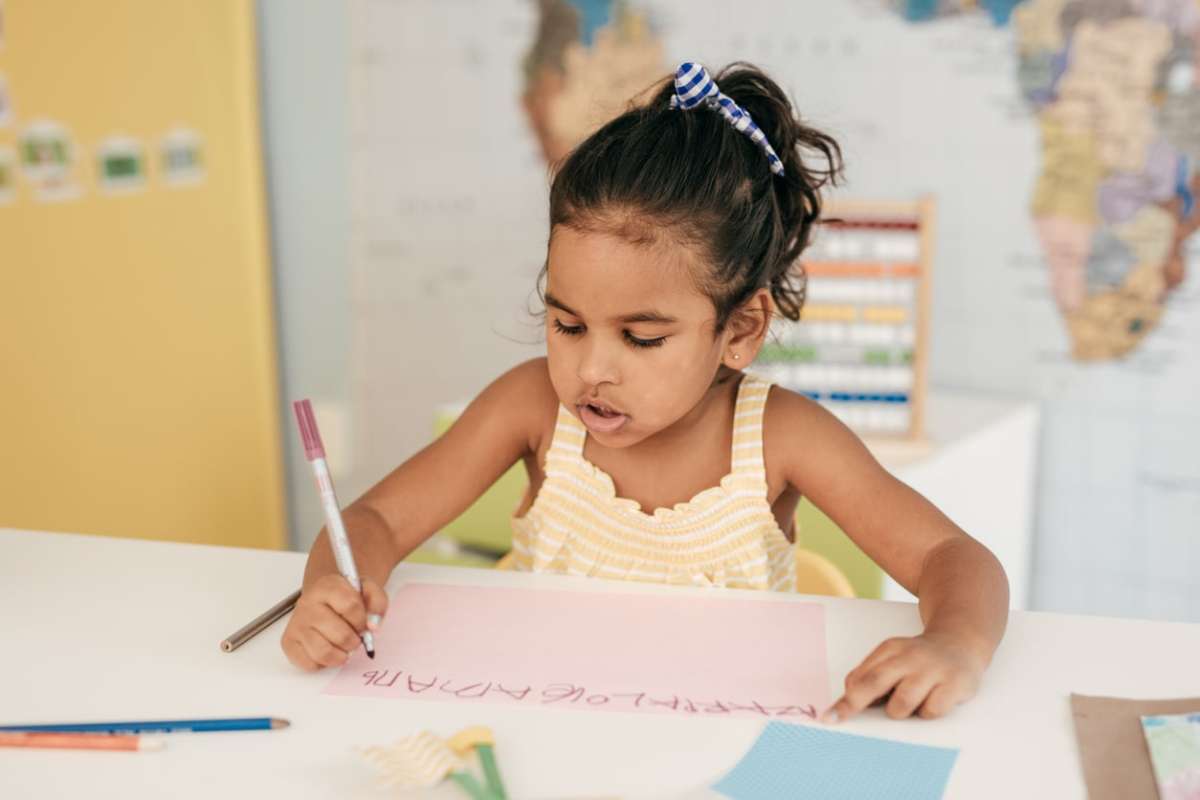
One of my favorite pictures from childhood is of my mother and I standing by an old chalkboard in our home. I have chalk in my hand, a big smile on my face, and my name is written in shaky cursive on the board behind me.
My mother is next to me smiling with her thumbs up. You can tell I am proud of my new skill and that my mother is celebrating my achievement. This snapshot is full of happiness and warm memories.
Helping a child learn to write their name for the first time is a significant milestone in literacy development. Not only is name writing an essential skill, but it also indicates that the child is making progress in literacy development.
Related: Kindergarten Prep: Writing Tools and Fine Motor Skills
When a child learns to write their name, it shows that they are beginning to bring together essential elements of reading and writing development, such as alphabetic knowledge, phonological awareness, print knowledge, writing skills, and phonics (Cabell et al. 2009; Puranik & Lonigan 2012).
Helping a child learn to write their name accurately is an excellent goal to work towards, especially as you prepare for Pre-K or kindergarten readiness.
When Should Kids Learn to Write Their Name?
As with most developmental processes, young learners will develop literacy skills at different ages. Between the ages of 2-5, little ones usually begin to show interest in literacy activities.
By the time they reach kindergarten (ages 5-6), they can generally write and recognize their name (Puranik CS, Lonigan CJ, Kim YS, 2012). This doesn't mean that they are proficient readers or have well-formed writing skills at that time.
Learning Letters
It simply suggests that they are developing an understanding of name recognition and increasing their literacy skills such as phonemic awareness, letter identification, alphabetic knowledge, and phonics.
Emergent writing in young children often looks unconventional with scribbles or simple drawings representing ideas. Rowe and Neitzel (2010) suggest children as young as 2 years old may begin to mimic writing through drawing or symbolic markings to represent their words or ideas.
Copying Letters on Paper
As a child’s writing skills grow, you are likely to see writing in strings of letters or copying of words from environmental print as they attempt to represent their thoughts on paper. As young children continue to develop literacy skills, their writing improves. This is especially true with continued exposure, practice, and play surrounding written language.
As writing skills continue to develop, correct letter formation and name-writing activities become part of the emergent literacy process.
Name Writing Activities for Kindergarteners and Pre-Schoolers
As your child becomes more comfortable with writing letters and gains a better understanding of the alphabetic principle, you can assist them in practicing their writing skills by providing structured writing learning activities and instruction.
Choose suitable activities, then modify and tailor them as needed to meet your child's specific needs and learning abilities. By offering encouragement, support, and quality instruction, you can help pave the way for successful writing experiences.
To practice name writing, try some of these activities with your child:
-
Letter ID
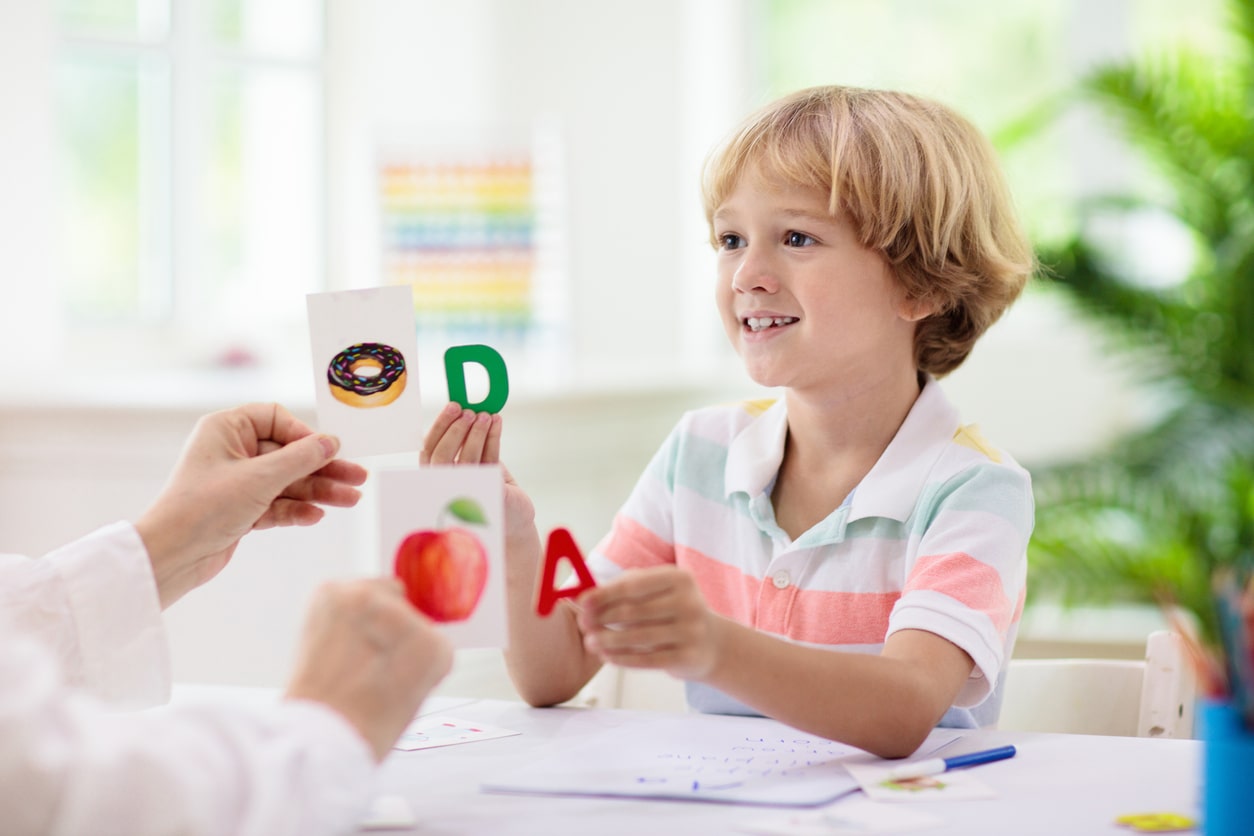
Help your child recognize and learn the sounds of letters in their name. This does not need to be a ‘skill and drill’ activity.
Rather, seek organic ways to fold instruction into play and talk.
For example, on a walk with your child, you might point out the first letter on the stop sign, say the word “stop,” and explain that the S makes the /s/ sound.
Use your finger to trace the shape of the S in the air with them, talk about how it looks like a snake or a curvy line.
Remind them that the S in stop sounds like the /s/ in Sarah, their own name.
These literacy interactions can be spontaneous, require little preparation, and allow for authentic learning opportunities and conversations surrounding language. Over time, your child's knowledge surrounding letter identification will grow.
-
Trace and Copy
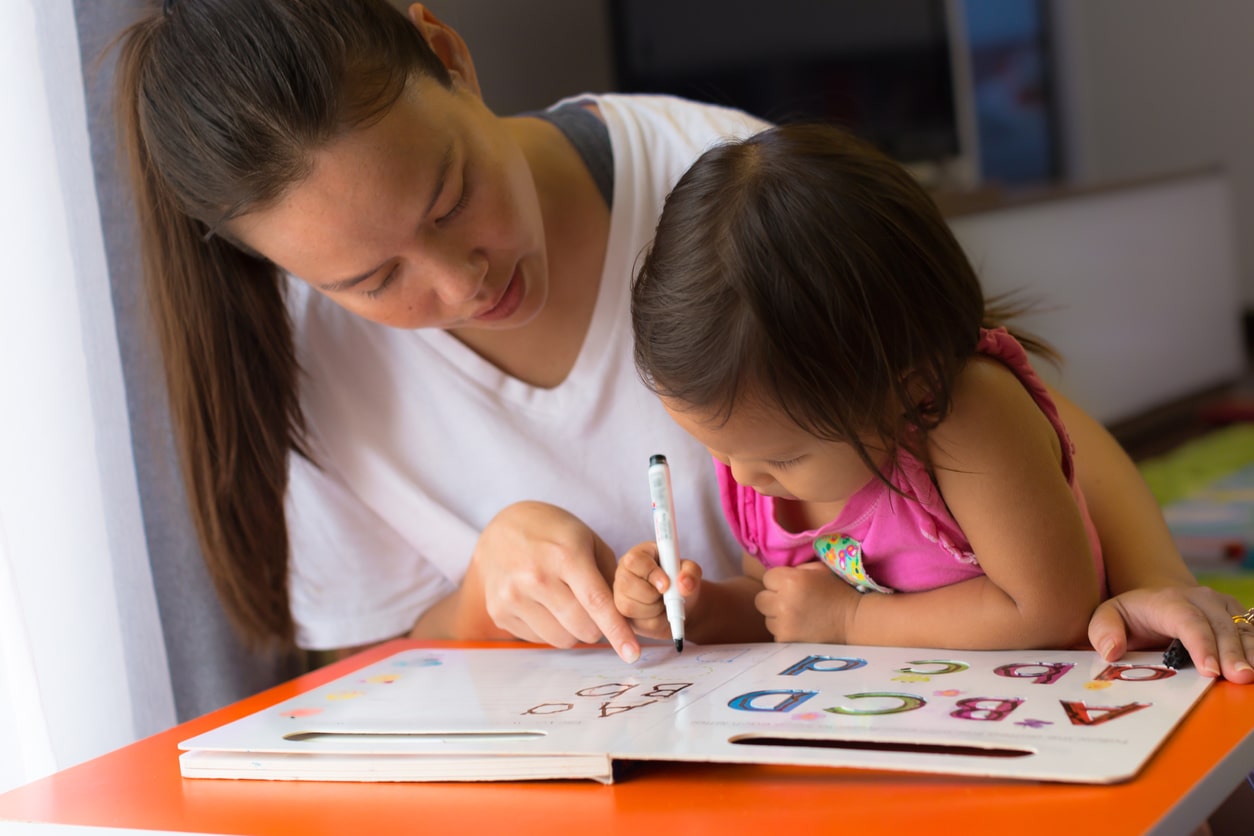
Have your child practice tracing and copying letters in their name in multiple ways.
This can be done by simply running their finger over the shape of a letter, writing letters with a crayon or pencil, or tracing letters into a sand tray.
Using printables, practice worksheets, name worksheets, or other writing practice activities can also help strengthen name-writing skills.
You might lightly trace the letters of their name on lined paper and work with your young child to practice tracing until you can erase the letters and let them try writing without the guide.
-
Fine Motor Skills Practice
Encourage your child to try hands-on activities like using lacing cards, cutting on lines with scissors, coloring, drawing, painting, paper folding, or playing with play dough. These activities can all be great ways to practice fine motor skills needed for writing.
-
Salt Tray Writing
For this activity, find a deep tray and put half an inch of smooth sand in the bottom. Have the child use their finger or a pencil to practice name writing in the sand.
They can shake the pan to resettle the sand and practice multiple times. This tactile experience enhances letter recognition practice and fine motor skills.
-
Shaving Cream Writing
Much like salt tray drawing, use a tray or desktop and spray a small amount of shaving cream.
Spread the shaving cream around and use the surface for writing letters and words. Have the child smooth the shaving cream and practice writing the letters in their name multiple times.
Using something tactile like shaving cream is a great way to practice letter formation, letter recognition and name recognition.
-
Playdough Shapes
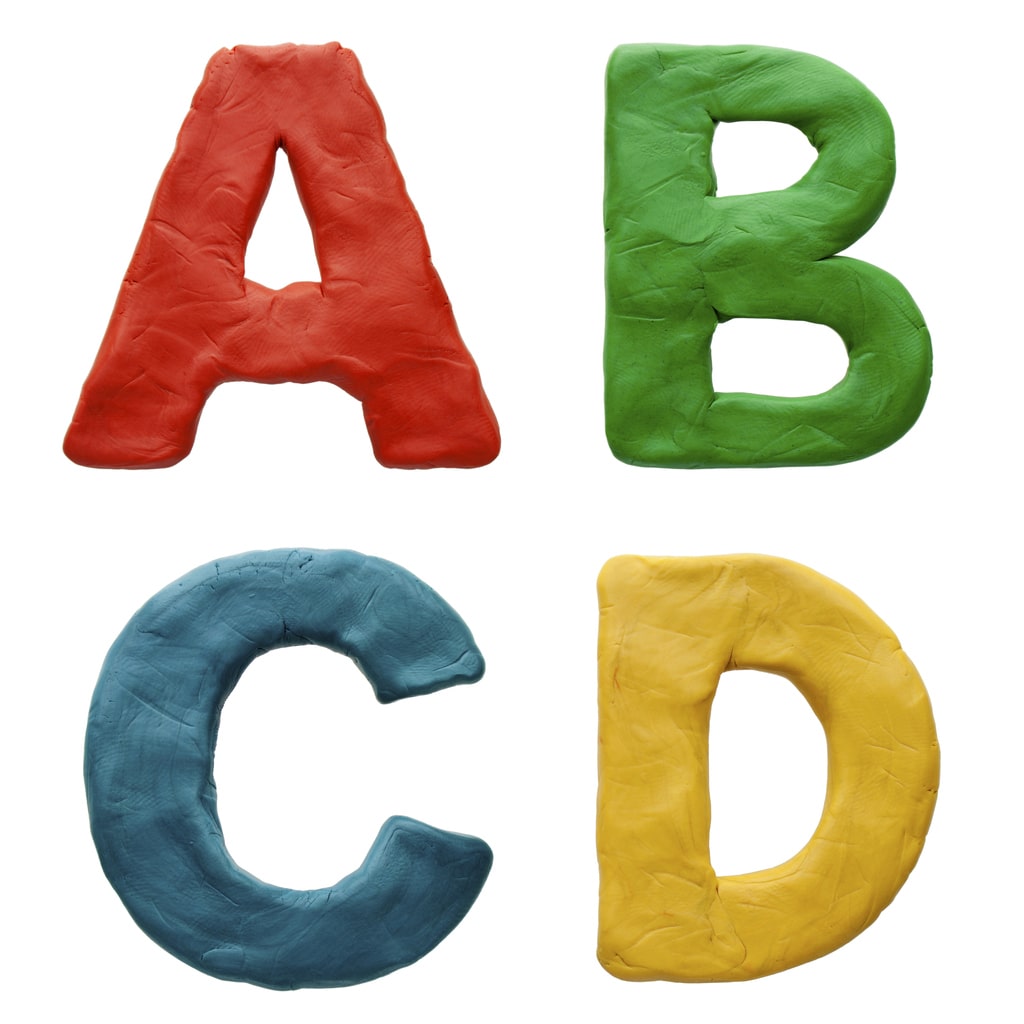
For this letter-shaping activity, simply write the child’s name on a piece of paper.
Then have your little one use playdough to form the letters using the templates as a guide. This is a fun way to practice the letters of their name in a hands-on manner.
-
Squishy Tactile Bags
Use a resealable plastic zipper bag filled with equal amounts of flour and water (a small amount will do) and a drop of food coloring to make a reusable impression tablet.
Remove as much air from the bag as possible and press the bag flat.
Your little one can then write on the bags with their finger or practice their pencil grip as they write with a soft-tipped object.
The pressure will make indentations on the plastic through the paste inside. Squeeze and flatten the bag to start again.
-
Road Map Letters
Try drawing your child’s name on a large piece of paper, then tape the paper to the wall.
Have your child do a name-tracing activity by going over the letter template with a Matchbox car or other toy.
This will help them practice and become more familiar with the shapes and formation of the letters of their name.
-
Markers, Crayons, Highlighters, Dry Erase Markers
Provide colorful markers, highlighters, smelly pens, dry-erase markers, paints, or crayons to your child.
Have your child practice writing the letters of their name with multiple writing instruments. This not only adds a creative element to writing but is also a fun way to reinforce letter formation and handwriting practice.
Using multiple writing instruments also supports fine motor skills like the pencil grip.
-
Letter Search
As you learn new letters and sounds in your child’s name, embark on a letter hunt with them. While driving, you might say something like:
- “I see an /h/ like the one in your name on that sign, can you point to it?”
- “Look at this cereal box, can you point to every /m/ you see?”
- “Run and touch every /w/ you can see on that wall.”
This is a simple way to help young learners become more aware of the print around them.
-
Label It!
Mark your child’s bedroom, drawers, closet, or toy bin with their own name. This is a simple thing to do, but allowing your little learner to see their name regularly associated with their things is a powerful thing.
If you want to take it a step further, have your child write their own name and use that writing as the label.
Labeling items will mean even more for young children when they see their names in their own writing.
-
Name Puzzle
Have your child use Scrabble blocks, magnetic letters, or even scraps of paper with alphabet letters on them to spell their name.
Mix up the letters of their name with a few other letters and have them pick out and sort the letters in their name in the correct order.
-
Books! Books! Books!
One of the best ways to help your young learners become more comfortable with emergent literacy and writing skills is to immerse them in a literature-rich environment.
Read to your child often and talk to your little one about the stories you read together. Encourage them to represent their ideas and thoughts connected to the story in written form.
These experiences will help build a love of reading and confidence in their writing skills and abilities.
Practice Name Writing Before Starting Kindergarten
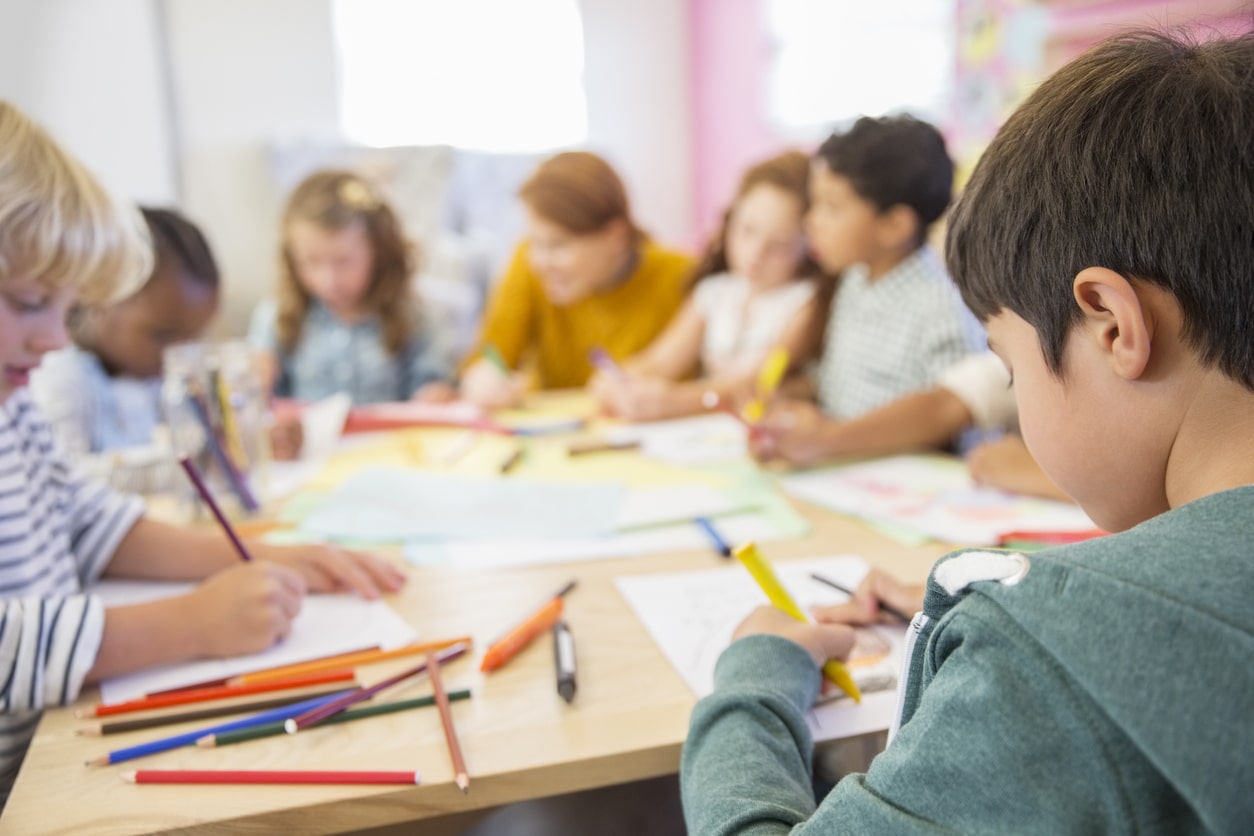
Teaching your child how to write their name is a crucial step in their academic journey. It's important to remember that every child develops their literacy skills at their own pace and they need patient and supportive guidance.
Even if the letters are not formed perfectly or the handwriting lacks clarity, it's essential to understand that these are steps towards a greater objective of helping the child become a lifelong learner and a confident writer and reader.
When young learners are starting their literacy journey, they require encouragement, sound instruction, and practice.
Celebrating your child's writing achievements and milestones, such as writing their name, can have a significant impact on their confidence and pave the way for a successful kindergarten experience.

